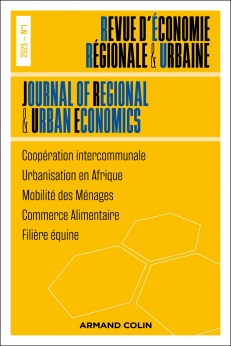
REVUE D'ÉCONOMIE RÉGIONALE ET URBAINE (1/2025)
Pour acheter ce numéro, contactez-nous
Recevez les numéros de l'année en cours et accédez à l'intégralité des articles en ligne.
Dans un contexte où les enjeux sociaux de la transition énergétique sont de plus en plus forts, cet article s’intéresse aux éléments structurels d’un territoire susceptibles de fragiliser la population résidente face au renchérissement de l’énergie. Il propose un système d’indicateurs territoriaux reposant sur deux grands principes. D’une part, il s’attache à une démarche transversale aux secteurs traditionnels de l’action publique en traitant à la fois du logement et de la mobilité quotidienne des ménages. D’autre part, il s’adosse à la notion de vulnérabilité, entendue comme la combinaison des trois dimensions que sont la sensibilité, l’exposition et l’adaptabilité. Simples et facilement reproductibles sur l’ensemble du territoire national, ces indicateurs sont appliqués au cas de la Communauté d’Agglomération de Roannais Agglomération, permettant d’illustrer la diversité et la structuration spatiale des situations des quarante communes de ce territoire.
In a context where the social challenges of the energy transition are increasingly strong, this article focuses on the structural elements of a territory likely to weaken the resident population to rising energy prices. It proposes a system of six territorial indicators which is based on two main principles. On the one hand, it focuses on a transversal approach to traditional sectors of public action by dealing with both housing and the daily mobility of households. On the other hand, it is based on the notion of vulnerability, understood as the combination of the three dimensions of sensitivity, exposure and adaptability. Simple and easily reproducible across the entire national territory, these indicators were developed as part of research involving academics and practitioners. They were thus designed to be integrated into an operational platform intended to help local stakeholders with their territorial forecasts and to be able to be returned in the form of easily understandable maps and graphs. Their objective is to allow stakeholders to assess the relevance of their interventions in relation to the types of energy vulnerability that emerge in their territory - according to the two sectors, housing or mobility, and according to the three dimensions of vulnerability. As part of this article, they were applied to the case of Roannais Agglomération, an Agglomeration Community of 40 municipalities and 100,000 inhabitants located in the south-east of France, making it possible to show how they reflect the diversity and spatial structuring of the situations of the municipalities in this area.